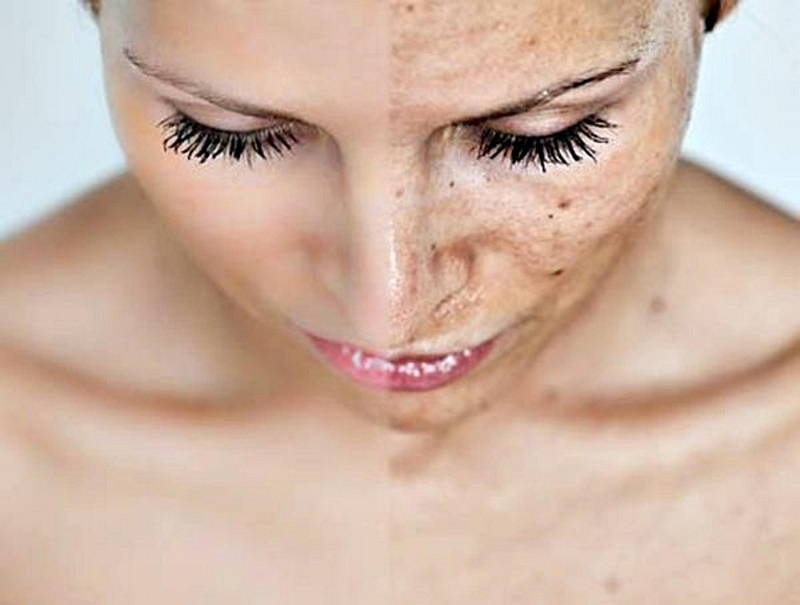Also known as chloasma, melasma is a symmetrical discoloration (meaning that appears on both sides of the face) that is characterised by large blotches of brown pigmentation. It can appear on the cheeks, bridge of the nose, upper lip and forehead. It is caused by an increase in melanin in the skin. It is far more common in women than in men.
The Cause of Melasma
Melasma appears to be caused by a combination of hormonal influences and sun exposure:
- Hormone treatments – these include oral contraceptives, IUDs, or hormone replacement therapy after menopause
- Sun – many people experience their first noticeable outbreak of melasma after prolonged sun exposure
- Pregnancy
- Certain toiletries and cosmetics – may exacerbate melasma
Treatment
Treatment can vary from the discontinuation of hormonal drugs and the regular use of a broad-spectrum sunscreen, to topical therapies that are meant to inhibit any new pigmentation, in addition to reducing or fading the colour of existing areas of melasma.
A high SPF sunscreen with good UVA protection should be applied every day to the face prior to leaving the house. The application of a tinted foundation will also act as a physical sunblock. Other forms of protection such as a hat should also be used.
Bleaching agents help to restore the skin colour back to normal. Hydroquinone is one of the common agents used. It is important to ensure that the hydroquinone cream is made up fresh, as it has a relatively short shelf-life. The cream needs to be stored in a cool, dark place. If it turns brown, this means that it has become oxidised and no longer works. A fresh supply will then need to be made up. A number of other chemicals may also be of use. These include kojic acid and azaleic acid. These agents all work slowly on the skin to decrease skin pigment. Remember they are not true bleaches and do not fade the current pigment. Rather, they decrease pigment cell activity so that as the skin is remade less pigment is deposited into it. The skin turns over once per month and this implies that it will take quite a few months of routine use before improvement is seen. Typically, these products are somewhat irritating to the skin and can produce some redness and flaking. Usually we recommend they be applied initially once each day, usually at night-time for the first two to four weeks. As tolerance develops to the preparation, it is best to increase their use to twice a day.
Chemical peels can be used to help topical therapy work well. Peels act as a stripping agent to remove some of the surface pigment and again allow better penetration of the topical agents.
If you have any questions or concerns about melasma contact your local doctor, who will arrange for you to see a dermatologist. Contact Us Today!
